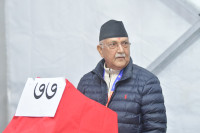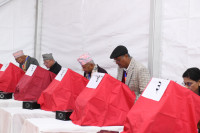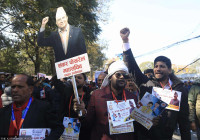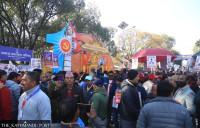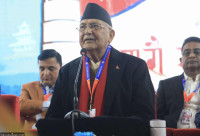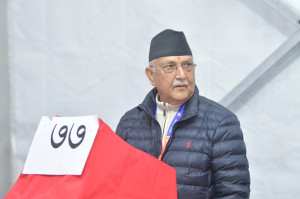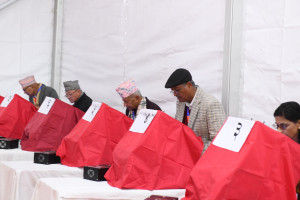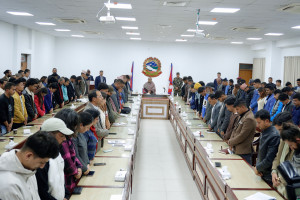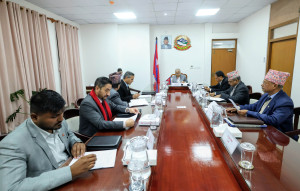Politics
Lingden lifts Rastriya Prajatantra Party’s status in the House
On Thursday evening, the party’s share of proportional representation votes was 7 percent.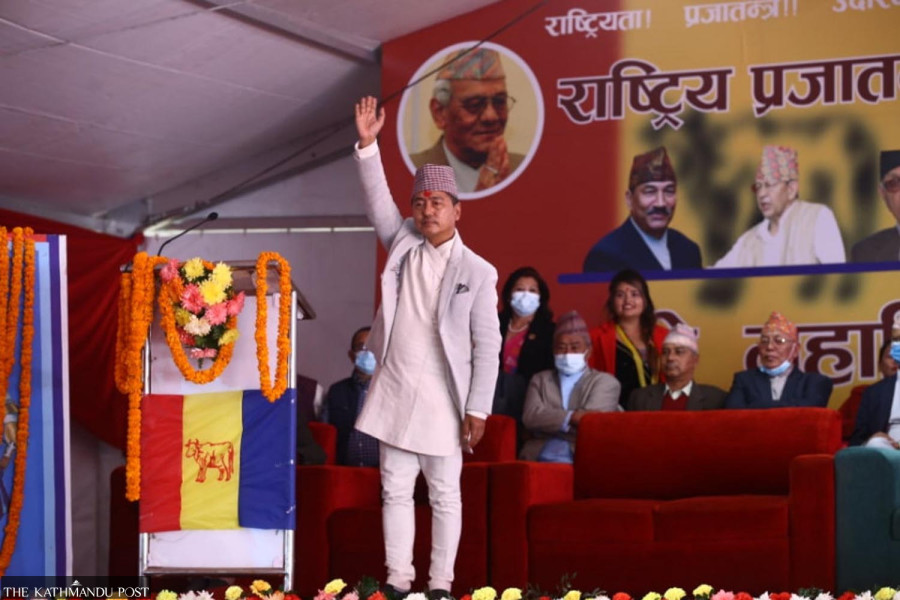
Binod Ghimire
The Rastriya Prajatantra Party-Nepal led by Kamal Thapa emerged as the fourth largest party from the second Constituent Assembly in 2013, winning 24 seats.
The party cashed in on pro-Hindu and pro-monarchy sentiments to secure a significant number of votes, mainly under the proportional representation (PR) category. Thapa used his party’s strength to bargain for power. The party first joined the KP Sharma Oli-government in 2015, and then, the government of Pushpa Kamal Dahal in 2017. His party again became part of the Sher Bahadur Deuba government the same year, which only added to Thapa’s image as an opportunist. As a result, his party suffered a drubbing in the 2017 elections.
Among the party’s then candidates, only Rajendra Lingden, the current chairperson of the Rastriya Prajatantra Party, won the elections, from Jhapa-3. The party couldn’t cross the three percent threshold to qualify for PR seats.
The party’s poor show in 2017 prompted different pro-monarchy parties to eventually merge, in 2020, to form a unified Rastriya Prajatantra Party. Then, the party’s general convention in December last year elected Lingden as party chair over Thapa.
Stung by his defeat in the chairman race, Thapa quit the party, and revived his old Rastriya Prajatantra Party-Nepal.
While Thapa’s party faced a debacle in the local polls, Lingden’s performed better. Though his RPP won only in four units—three municipalities and one rural municipality—it won top posts in 63 wards. It was the first time the party had won the mayoral post in a municipality in Kathmandu Valley. It stood second in around a dozen local units, including in Siddharthanagar Municipality, and Kachanakawal and Ruby Valley rural municipalities.
The party couldn’t meet the three percent vote threshold to qualify for PR seats in 2017, however, it secured around 3.16 percent popular votes in the local elections this May.
Six months later, the party has done even better. As vote count crosses mid-way mark, Lingden’s party has won four seats and is leading in two constituencies. It is in the fifth position after the CPN-UML, the Nepali Congress, the Rastriya Swatantra Party and the CPN (Maoist Centre) in PR votes. “We are satisfied with the party’s performance. It has been rejuvenated under the new leadership [of Lingden],” Mohan Shrestha, chief of the party’s publicity department, told the Post. “We will further consolidate our strength in the days to come.”
Lingden’s party has managed to get more than seven percent votes under the proportional category, as of Thursday evening. If the party wins the seats it is leading in so far, it will have six FPTP lawmakers in parliament. The seven percent PR votes would bring in an additional eight seats. It would then have around 14 seats in the lower house, making it far bigger in strength compared to 2017.
The RPP had contested the election alone across the country except in select constituencies, including Jhapa-3, where Lingden won with the help of an alliance with the CPN-UML. Similarly, Banke-2 and Rupandehi-3 were other two constituencies where it had partnered with the UML. It won in Banke and was locked in a tight fight against Home Minister and Nepali Congress leader Bal Krishna Khand in Rupandehi, suggesting that its partnership with the UML had borne fruit.
In the view of political experts, Lingden’s leadership is definitely one factor boosting the party’s electoral prospects. “The new leadership created a synergic effect. Though he is untested as party chief, Lingden has succeeded in projecting his clean image to the electorate,” Sanjeev Humagain, a faculty member of the political science and international relations department at the Tribhuvan University, told the Post.
While Thapa, a long-time leader of the party, became a minister multiple times, holding powerful portfolios including the home ministry, Lingden is yet to hold any executive post, except as a directly elected lawmaker from his home constituency.
In the RPP’s most recent general convention, it also elected Dhawal Shamsher Rana as its general secretary, thus installing two new faces in the party’s top two positions. A popular leader in his home district of Banke, Rana has won a federal seat from the district this time.
Having found a new champion for their pro-Hindu and pro-monarchy ideology in Lingden, say experts, many voters who were unhappy with post-2006 political changes this time plumped for the new RPP avatar.
In the words of Humagain, “Lingden’s projection as a charismatic leader on social media also helped the party’s electoral cause”.




 12.12°C Kathmandu
12.12°C Kathmandu
